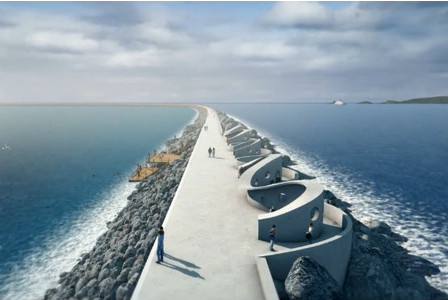


The difference in height between high tide and low tide is called the tidal range. In this case, the tidal wave is defined as the rise and fall of the water surface accompanied by the tidal current. High tide occurs when the crest of the tidal wave hits the shore and low tide occurs when the trough of the tidal wave hits the shore. The tides are periodic waves that originate in the ocean and are due to the gravitational force of the Moon, the Sun, and inertia. The horizontal movement of the water that accompanies the changing surface is called the tidal current. What are ocean tides and what causes them? Tides are the periodic (occurring at regular intervals) rise and fall of the surface water level of the oceans, bays, gulfs, and inlets. Over the course of a day, the ocean tide can come in and wipe away all the work you put into building the castle. But if you want your castle to last the day, you had better be careful where you build it. While there are some challenges associated with the installation and maintenance of tidal power technology, advances in technology and continued investment in this field hold promise for the future of renewable energy.Have you ever spent the day at the beach? It's fun to lie in the Sun and build sand castles. It is a clean and sustainable source of energy that has the potential to play an important role in meeting the world’s energy needs in a sustainable way. In conclusion, tidal energy is a type of renewable energy that is generated by the movement of ocean tides. Governments and businesses around the world are investing in tidal power projects, and researchers are working to improve the efficiency and cost-effectiveness of tidal energy technology. Additionally, tidal power is limited to coastal areas with strong tidal currents, which can limit its widespread use.ĭespite these challenges, tidal power has the potential to play an important role in meeting the world’s energy needs in a sustainable way. For one, the installation and maintenance of tidal turbines and barrages can be expensive, and there may be some environmental impact associated with their construction. However, tidal energy also has some disadvantages. Unlike fossil fuels, which release greenhouse gases and contribute to climate change, tidal power does not produce any harmful emissions or pollutants. One of the main advantages of tidal power is that it is a clean and sustainable source of energy. Unlike solar or wind power, which can be intermittent, tidal power can be predicted with a high degree of accuracy, which makes it a valuable source of baseload power. Tidal power is a predictable and reliable source of renewable energy, as tides are driven by the gravitational pull of the moon and the sun, which are both predictable and constant. The image above shows the process to generate tidal energy When the tide goes out, the water behind the barrage is released, and as it flows through the turbines, it generates electricity. As the tide flows in and out, water is trapped behind a barrage, which creates a difference in water levels.
TIDAL BARRAGE SERIES
Tidal barrages, on the other hand, work by using the power of the tide to move water through a series of turbines. As the tide flows in and out, the blades of the turbine spin and generate electricity, which is then transmitted to the grid. Tidal turbines are similar in design to wind turbines, but are installed underwater and are driven by the movement of tidal currents. This energy can be harnessed through the use of tidal turbines or barrages, which capture the kinetic energy of the tides and convert it into electricity. Tidal power is a type of renewable energy that is generated by the movement of ocean tides.


 0 kommentar(er)
0 kommentar(er)
